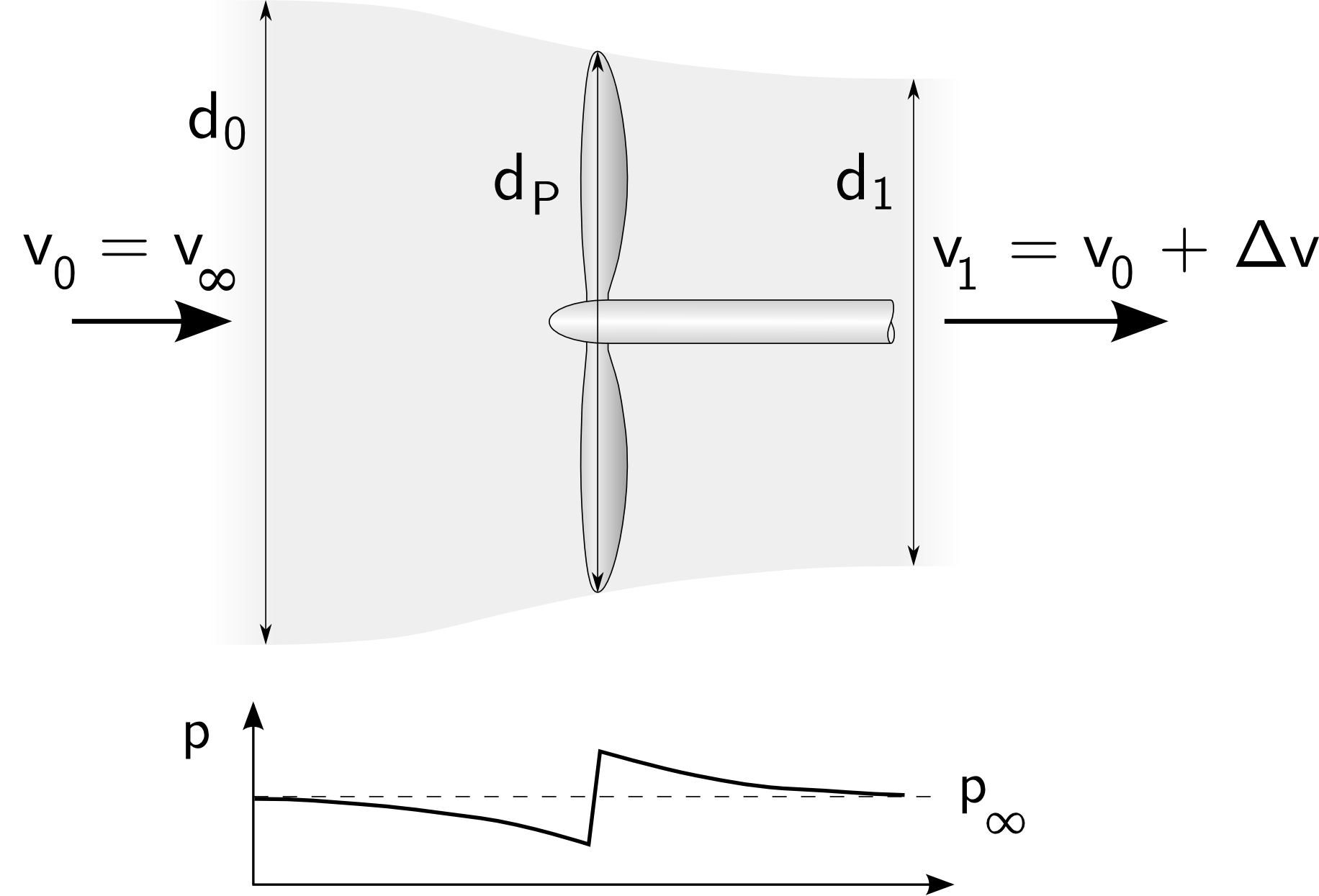Not quite. The propeller accelerates air, and the cross section of the accelerated air is slightly smaller than the prop disc area. However, this jet of air will sweep surrounding air with it, so there is no clear boundary. Also, the fuselage or engine nacelle will displace the slip stream / propeller wake, so you need to check what cross section is needed to accommodate both. If you now look at the wetted area in the propeller's wake, you need to calculate two effects:
- Increased dynamic pressure and surface speed with fully turbulent boundary layer, causing more friction and pressure drag, and
- Propeller swirl, which creates additional lift / side force on the surfaces in the prop wake. Include trim drag to counteract the swirl effects.
Fist you calculate the drag without the propeller, and then with it. The difference is the contribution of the propeller wake. For simplicity, assume a constant speed over the cross section of the propeller wake and do not include the acceleration of surrounding air. For more precision, try to add the deflection of the propeller wake by the wing and consider that the acceleration of the air flowing through the propeller disc is normal to it while the airflow itself comes from a direction described by the angle of attack and the angle of sideslip. If these are not zero relative to the propeller, the propeller wake will have a different direction than the surrounding air flow.
If $\Omega$ is the angular velocity of the propeller, $v_{\infty}$ your flight speed and $\Delta v$ the speed increase due to the propeller of the diameter $d$, your swirl $\omega$ is $$\omega = \frac{2\cdot\Delta v\cdot(v_{\infty} + \frac{\Delta V}{2})}{d^2\cdot\Omega}$$
The speed increase in the propeller propeller wake for a given thrust $T$ is $$\Delta v = \sqrt{v_{\infty}^2 + \frac{4\cdot T}{\pi\cdot d^2\cdot\rho}} - v_{\infty}$$
in air of the density $\rho$. Thrust is engine shaft power times propeller efficiency, divided by flight speed.

This sketch shows the stream tube going through the propeller disc (light grey) and below the pressure profile in the stream tube. Air is sucked into the propeller and pushed out at the back, and the cross section of the stream tube is proportional to the inverse of the flow speed. In the propeller disc, just half of the speed increase $\Delta v$ has occurred (Froude's hypothesis).
EDIT:
This answer by @xxavier lead me to a very interesting paper in which the drag of a Luscombe 8b with and without thrust was compared. A very thoughtful way was used to arrive at zero-thrust numbers, and the result showed that the additional drag from the propeller effects was about 30% of the total zero-lift drag without thrust.


